Balance: The Bold Bet of Game Companion play Platform
What is Companion Play?
In the gaming world, companion play has evolved far beyond mere “companionship.” It is now becoming a comprehensive service that meets the diverse needs of players, especially in multiplayer online games like MOBA, FPS, and MMORPGs. Companion play has emerged as a significant market, offering value through social interaction, skill improvement, or simply entertainment.

Social Needs
What is companion play? For lonely players, gaming can feel like wandering through a desolate wilderness. This is where companion play shines—joining your game, teaming up, and inviting you into an engaging experience that pulls you out of isolation.
In-game interactions aren’t just about passing the time; they’re about forming connections and alliances. For some, winning isn’t the goal—being remembered is.
Companion play offers a gateway to social recognition, making it an appealing option for those seeking community within the gaming world.
Skill Enhancement Needs
But companion play is not just about providing company; it’s also about mentorship. Competitive games come with layers of strategy that can overwhelm new players. Companion players can teach strategies, offer tips, and gradually help players peel back the secrets of the game.
This type of assistance is particularly valuable in competitive games like League of Legends or DOTA 2, where companion players help break through plateaus and elevate players to new levels of proficiency.
Increased Engagement and Retention
From a game developer’s perspective, companion play serves as a powerful tool for increasing both engagement and retention. Players who are socially connected within the game are more likely to stay and continue playing.
Whether it’s the thrill of victory or emotional bonding through teamwork, companion play creates a shared experience that fosters loyalty. This is especially true in team-based games, where finding the right squad often makes all the difference, reducing player churn in the process.
Economic and Commercial Value
Companion play has also evolved into a legitimate business, not just a pastime for players. Many platforms take commissions or service fees, while professional companion players can earn significant income through their skills and reputation.
In some cases, this has expanded into an entire ecosystem, including virtual goods and in-game transactions. Companion play has become a crucial part of the gaming economy, driving spending and creating a symbiotic relationship between games and their economic systems.
Companion Play in Web3: A New Frontier
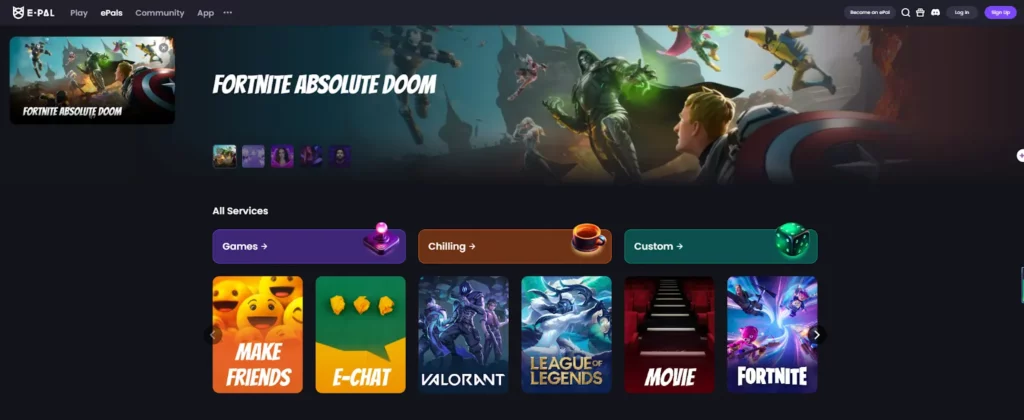
E-PAL, a global online companion play platform, specializes in providing services for gamers. Users can find companion players on the platform, offering everything from skill enhancement to social companionship.
E-PAL caters to a wide variety of games, including popular titles like League of Legends, Apex Legends, and Valorant, while also offering more social services like chatting, coaching, and community events.
Companion play in the Web2 era has already proven its value, as seen with the rise of platforms like E-PAL, PlayV, and Bixin. Market research shows that companion play services are steadily growing from a niche market to a mainstream industry, with an expected market size reaching billions by 2025.
With the growing demand for companion services in esports, social games, and live streaming, the rise of Web3 and decentralized social networks presents even more potential for the future of companion play.
Enhanced Interactive Experience
Web3 games emphasize decentralization and user ownership. Companion play can enhance user experiences through social interaction and in-game guidance.
For example, in Web3 games, companion players can help newcomers familiarize themselves with decentralized mechanics, such as NFT trading and virtual asset management.
Additionally, in social games, companions can facilitate stronger community connections, aligning with Web3’s principles of open social networks.
Integration with Token Economies
Web3 games often incorporate token economies that incentivize participation. Companion play can fit seamlessly into these models, where players can earn tokens by offering companion services, and users can pay with tokens to access these services.
This creates new income streams for both companion players and regular users, driving the economic flow within the Web3 ecosystem.
Decentralized Identity and Trust Mechanisms
Web3 emphasizes decentralized identity management, and blockchain-based identity verification can help build a more reliable reputation system for companion players. Historical performance and user feedback would be transparently displayed on-chain, minimizing trust issues prevalent in traditional companion play markets, and fostering a safer transaction environment.
Through these mechanisms, companion play evolves from simple entertainment into a driving force behind the popularization of Web3 games, bringing new economic opportunities and an enhanced user experience for decentralized social platforms. One platform making waves in this revolution is Balance, a Web3 gaming platform that emerged from the companion play platform E-PAL.
Introducing Balance
Balance is the next key step in building the Web3 gaming ecosystem, created by the E-PAL team. As a Web3 platform focused on blockchain gaming, Balance aims to revolutionize the gaming industry by leveraging blockchain and AI technologies, utilizing a vast user base of over 2.4 million Web2 users to accelerate innovation.
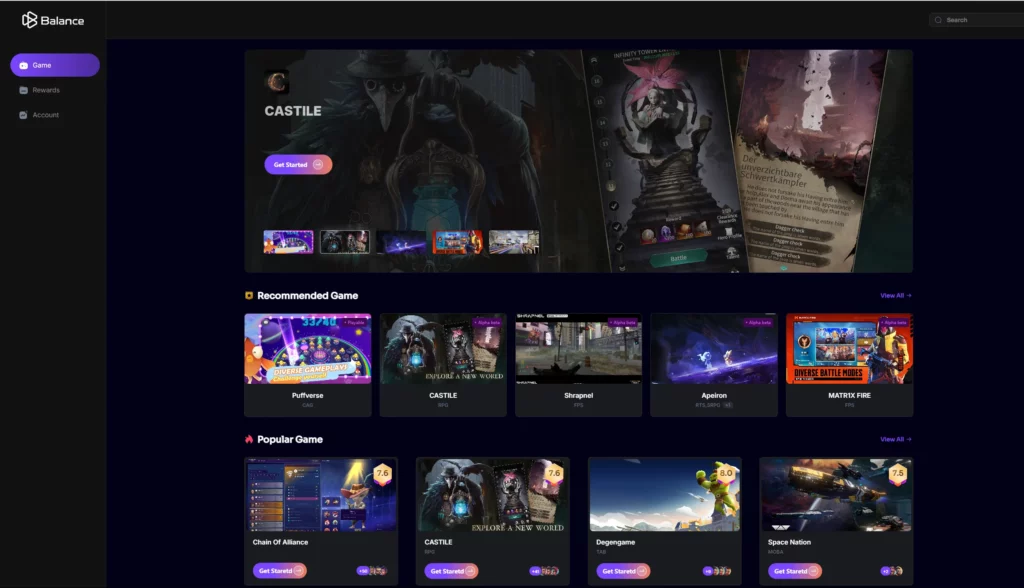
Balance’s core goal is to build an open, inclusive, and fair gaming ecosystem. By combining AI and blockchain, the platform allows developers to easily build and promote their games, while offering players a more personalized and diverse gaming experience. This synergy will help drive growth and progress across the entire Web3 gaming industry.
Balance’s technical framework facilitates cross-chain interoperability, enabling seamless connections between developers and players across different blockchain networks, thereby creating a unified Web3 gaming ecosystem.
It offers game distribution and promotion services for developers, allowing cross-chain distribution of games on the platform. It also provides players with a one-stop service, including game access, purchases, asset trading, social interaction, airdrops, and camaraderie.
Game Access
Balance integrates all leading Web3 games and offers users a Balance Passport, which simplifies registration and login processes across multiple blockchain networks. This allows users to easily access and rate games, helping developers understand user preferences and improve game quality. Selected top-tier games will also receive promotional support to boost developer growth.
Game Purchases
Games on the Balance platform accept EKP tokens as a payment option for in-game and marketplace transactions. Users can use EKP to purchase games or in-game items, spanning beyond Web3 games.
Through Balance’s successful partnerships with Web2 game developers, players can also use EKP to purchase virtual items in popular Web2 games, such as skins and items in League of Legends, Overwatch 2, PUBG, and CS:GO.
Asset Trading
Balance will establish a decentralized marketplace to facilitate NFT asset trading within games. With cross-chain interoperability protocols, users can freely exchange assets across different blockchain networks. All marketplace assets will be priced in EKP tokens, fostering liquidity and economic benefit for the Balance ecosystem.
Virtual Social Interaction
With the Balance Passport, every player will have a unique identity, blending user information, game data, assets, achievements, and social profiles. Balance also uses AI to create virtual characters within the ecosystem, enhancing social interaction and helping players build social networks. This strengthens social engagement and increases the enjoyment of games.
Through innovative integration of companion play and Web3 technologies, Balance is poised to become a significant player in the future of decentralized gaming.
Team Background
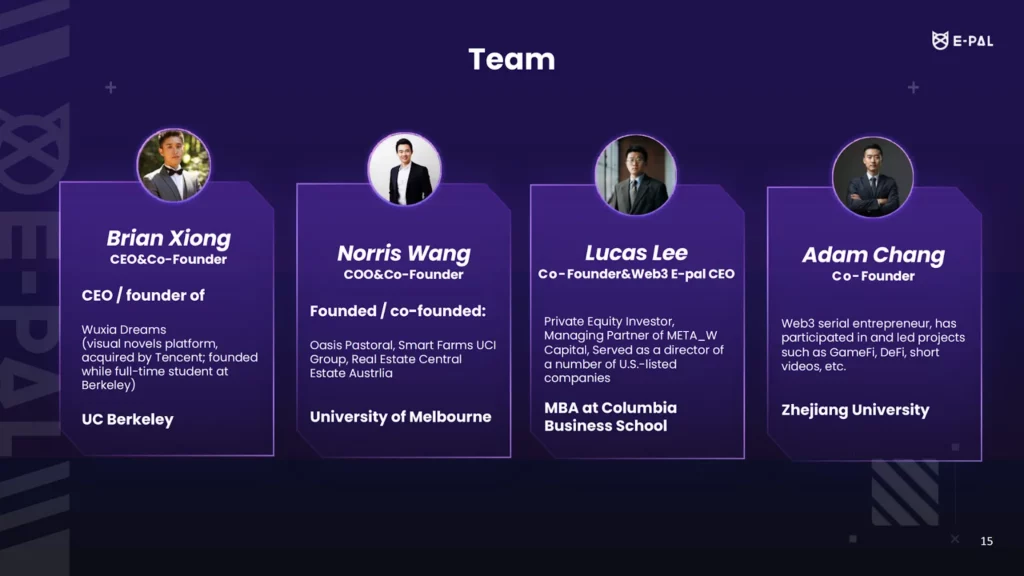
According to official information, the four co-founders of E-PAL have substantial experience in Web2 and Web3 entrepreneurship. The CEO founded the visual novel platform “Martial Arts Dream,” and continued to showcase his entrepreneurial skills after it was acquired by Tencent.
The COO is a co-founder of Oasis Pastoral. The other two co-founders have extensive experience in capital management with U.S. publicly listed companies and have also worked in Web3 fields such as DeFi and GameFi.
This team has built a strong foundation in the traditional internet space while making significant strides at the forefront of Web3.
Investment Background
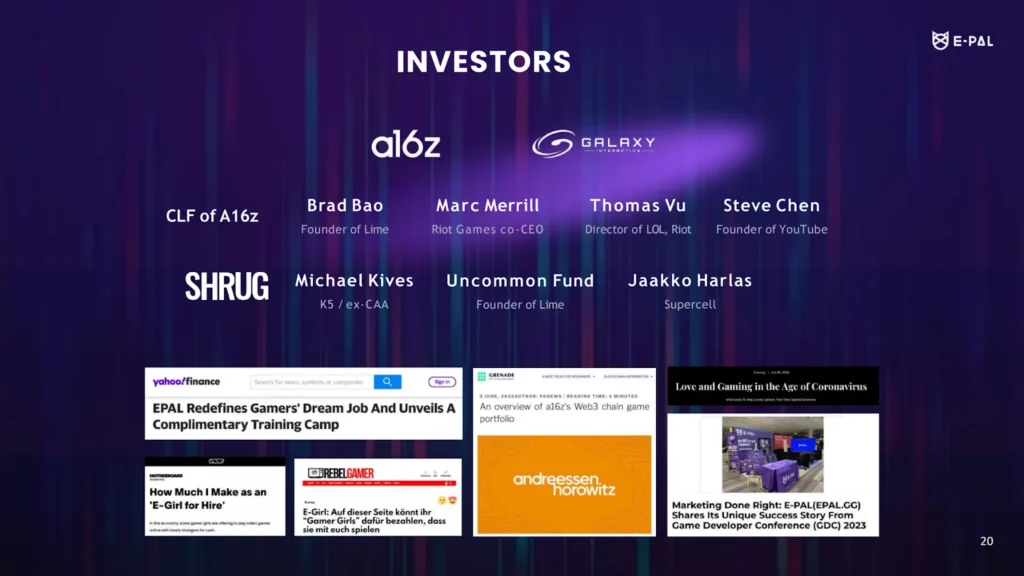
On September 5, E-PAL successfully completed two rounds of funding led by Andreessen Horowitz (a16z) and Galaxy Interactive.
The round also received support from many well-known investors, including Animoca Brands, K5, CLF Partners, MBK Capital, New Heights Fund, AMBER, MarbleX, Sky Mantra, Tuna, Aptos Labs, IOBC, Leland, Halcyon Capital, Uphonest, Taisu Ventures, Gate Labs, DWF Ventures, BING, WAGMI, as well as YouTube co-founder Steve Chen, Riot Games CEO Marc Merrill, and League of Legends Director Thomas Vu.
The total raised reached $30 million, reflecting investors’ strong confidence in E-PAL’s future development and providing robust financial support for further expansion in the Web3 space.
Roadmap
- March 2020: E-PAL launched version 1.0 of its website.
- September 2020: Completed $3 million seed funding led by Andreessen Horowitz (a16z).
- July 2021: Completed Series A funding led by Galaxy Interactive, with participation from a16z.
- December 2022: Began exploring Web3 technologies.
- March 2023: Established a Web3 team and developed Balance zkEVM.
- March 2024: Launched Balance zkEVM testnet and started developing the Balance platform.
- May 2024: Released Balance platform version 1.0, compatible with all EVM networks, allowing users to manage game assets.
- May 2024: Released Balance platform version 1.1, introducing bounty task features for users to earn reward points, which can later be converted into EPT tokens.
- May 2024: Began selling and minting Balance ID.
- June 2024: Started a round of financing with key opinion leaders (KOLs).
- June 2024: Initiated the sale of Balance nodes.
- June 2024: Launched Balance Passport, providing unified identity verification for users.
- July 2024: Released the Balance Wallet Chrome extension, facilitating access to the Web3 world.
- July 2024: Launched an open market on the Balance platform for one-stop game asset transactions.
- August 2024: Balance zkEVM mainnet went live, simplifying blockchain game development.
- September 2024: Partnered with over 500 games.
- October 2024: Integrated AI features into the Balance platform to support users in creating AI game companions.
- November 2024: Introduced AI components into Balance zkEVM, allowing developers to directly generate smart contract code from documentation.
- December 2024: Continued expanding the Balance platform’s compatibility to include networks like Solana, Avalanche, and Clayton.
Balance zkEVM
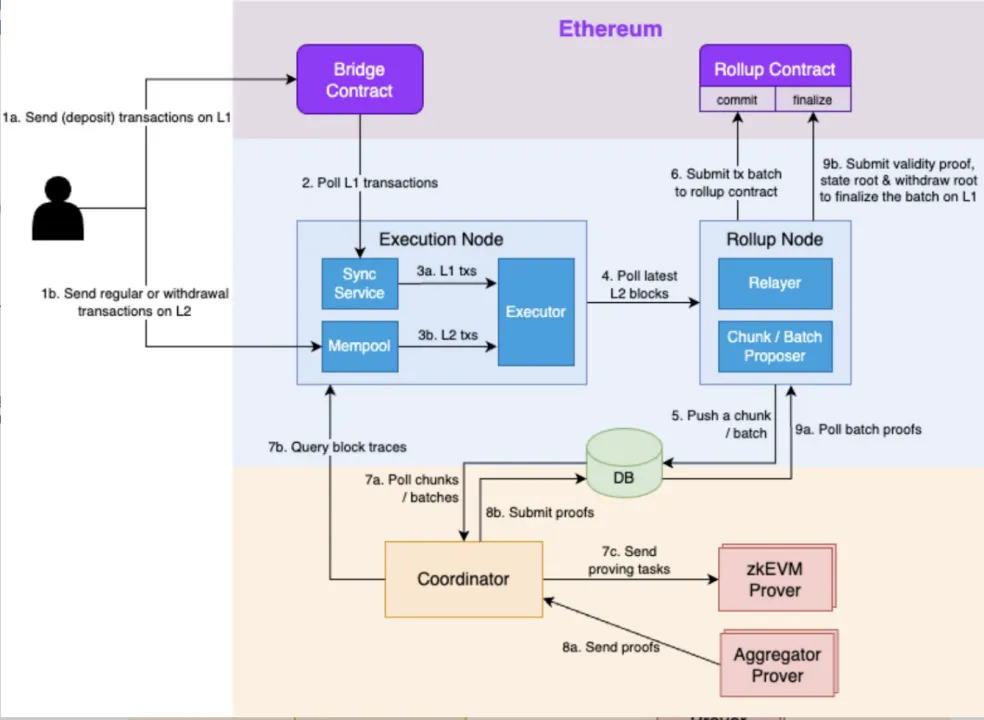
Balance zkEVM is a game chain based on Layer 2 zk-rollup technology and is compatible with the Ethereum Virtual Machine (EVM). It provides a scaling solution offering instant transactions, massive scalability, and zero gas fees. As a variant of EVM, Balance zkEVM leverages smart contracts to allow game developers to integrate customized digital ownership and Web3 mechanisms into their games.
For developers, a key benefit is that Balance zkEVM enables them to use the same programming language (Solidity) and development frameworks as Ethereum. This makes building game applications on a more secure and convenient Layer 2 solution easier.
Additionally, AI technology is integrated into the zkEVM public chain, modeling the source code of contracts already deployed on mainstream EVM public chains (including ERC20, ERC721, ERC1155, MarketPlace, Stake, Proxy, etc.).
An AI model, trained on over 200,000 lines of smart contract code, can automatically generate smart contract code for assets such as Tokens, NFTs, DEX, Marketplaces, Staking, Drops, and leveraged assets based on documentation.
It also facilitates automated deployment and generates SDK interfaces for user access. This significantly lowers the barrier for Web2 game developers entering the Web3 space, providing a powerful boost for traditional game companies to seamlessly integrate into the Web3 world.
EPT Token
EPT is the governance token for the Balance platform and Balance zkEVM. It rewards network activity within the ecosystem, such as transactions, providing liquidity, and building applications. EPT establishes an incentive mechanism among traders, creators, and markets, ensuring that all participants benefit from network activity.
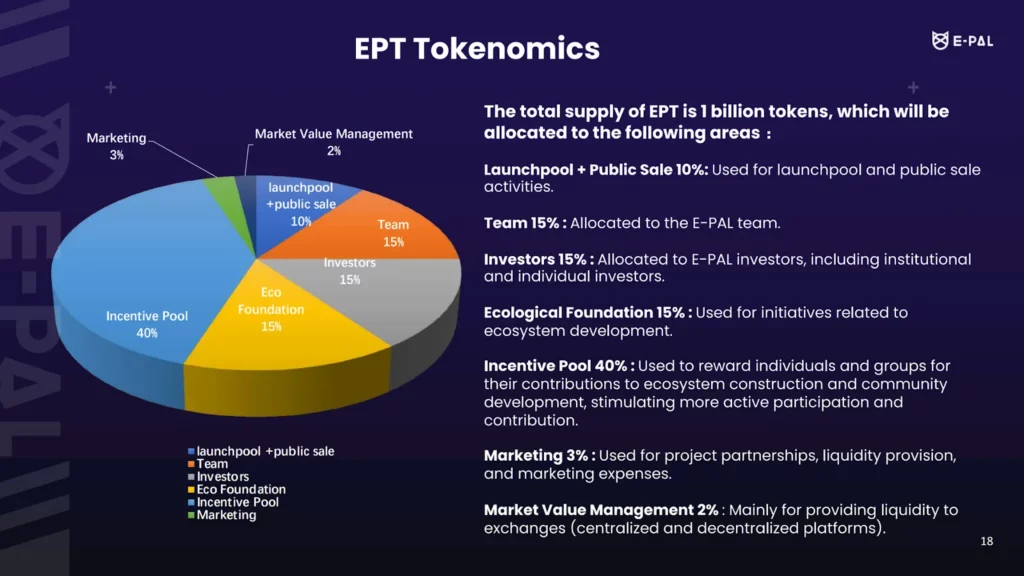
EPT Token Distribution
The total issuance of EPT tokens is 1 billion, distributed as follows:
- Launchpool and Public Sale: 10%
- Team: 15%
- Investors: 15%, including institutional and individual investors.
- Ecosystem Foundation: 15%, for ecosystem development initiatives.
- Reward Pool: 40%, for rewarding individuals and groups contributing to ecosystem building and community development, encouraging more participation and contribution.
- Marketing: 3%, for project collaborations, liquidity provision, and marketing expenses.
- Market Management: 2%, mainly for providing liquidity for CEX and DEX.
Applications of EPT Tokens
- Application Building Fees: Game developers using Balance zkEVM to build games need to pay certain fees, which can be directly paid with EPT tokens. Alternatively, Balance can automatically convert purchased currencies (ETH, USDT, etc.) into EPT tokens for payment on the public market. Users do not need to hold EPT tokens to conduct transactions through Balance zkEVM.
- Staking: Users holding EPT tokens can earn rewards through staking. A portion of the fees paid by game developers for application development is locked in a “Reward Staking Pool” managed by the foundation. EPT tokens in the pool are distributed monthly to staking participants.
- Proof of Stake and Governance: EPT token holders can participate in decentralized governance by voting on Balance-related proposals. Proposals may include topics such as token reserve allocation, developer grants, adjustments to application building fees, daily reward changes, and token distribution. The Balance Foundation will continuously enrich and add other categories of proposals based on community development. The foundation has the right to propose projects beneficial to the ecosystem and facilitate the proposal process, with all token holders voting on these proposals. Individuals wishing to submit proposals must hold a certain number of EPT tokens, and the foundation will review them before they enter the voting process. The specific number of required EPT tokens will be determined later.
- Network Security Maintenance: EPT tokens are used to pay for the operation and maintenance costs of network nodes. Additionally, Balance issues EPT tokens as rewards to incentivize node participants to maintain network security and complete block confirmations.
- Payment and Transaction Medium: EPT tokens serve as the medium for payments and gas fees on the Balance platform, playing a crucial role in value transfer. Users can use EPT tokens to purchase game goods and services on the platform and pay rewards.
- Priority Access: For games in Alpha or Beta testing stages, players wishing to gain early access need to hold a certain number of EPT tokens as access credentials.
- Social and Incentive Mechanisms: EPT tokens are also used for social participation and incentives. They encourage users to engage in community building, content creation, and social interaction, promoting project development and user involvement.
How to Participate Balance?
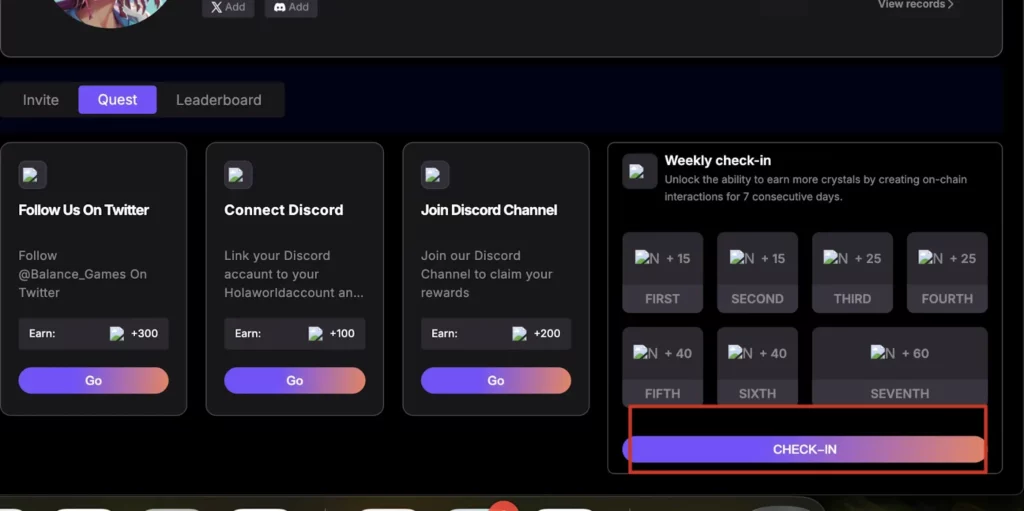
Balance is now in full swing with an exciting whitelist event:
Event Duration: September 2 – September 16
- Visit the Official Website: Head straight to the Balance website, connect your wallet, and step into this gaming universe.
- Complete Tasks: Finish various tasks on the platform to earn points and join the Pioneer Points Challenge.
- Invite Friends: Bring your friends along, invite them to join, and climb the leaderboard for a chance to secure a whitelist spot.
Special Instructions:
You can earn an NFT whitelist (WL) through the following three ways:
- Top 100 on the Leaderboard: The top 100 users who complete the most tasks will automatically secure a whitelist spot.
- Top 100 in Friend Invites: Players who rank in the top 100 for inviting friends will also win a whitelist spot.
- Points Experts: Users who score over 1,000 points will be entered into a random draw, and 200 lucky participants will be selected for a whitelist spot.
(Note: You can participate in all three activities simultaneously, but each winner can only claim one reward.)
The Pioneer Badge NFT is your VIP pass to the Balance ecosystem. Owning one means you’re staking your claim early, giving you first access to rare assets and a voice in the platform’s major decisions. Right now, the demand for this NFT is skyrocketing—like a beach landing where everyone is rushing to get in. The minting is expected in early October, with only 2,000 NFTs available. Once you secure one, the potential profit could skyrocket, but keep in mind, opportunities like this don’t wait long!
Conclusion
In summary, Balance is not just a platform aimed at improving the Web3 user experience—it feels more like an ecosystem poised to revolutionize the landscape.
The team is rooted in Los Angeles, USA, and was formerly known as Epal, the largest companion gaming platform in North America. With backing from top VCs like a16z and Galaxy, and even investments from YouTube co-founder Steve Chen and Riot Games CEO Marc Merrill, Epal became synonymous with gaming companionship, boasting 4.2 million active users and 450,000 Epals, thriving in the Web2 world.
But the story doesn’t end there. To embrace the Web3 era, Epal evolved into Balance. This is more than a name change—it’s a bold gamble on the future. No longer content with being a gaming companion platform, Balance is setting out to be the Web3 world’s user experience infrastructure. From smart contracts and digital currencies to decentralized social experiences, Balance is on a mission to make interactions freer, more fun, and even more profitable.
Gone are the days of simple interactions. With NFTs, virtual assets, and on-chain incentive mechanisms, every user can become a builder, playing a crucial role in this ecosystem revolution. Gaming companionship has evolved far beyond a one-way service—it’s now a multifaceted social experience that empowers users with more control and opportunities for profit-sharing.
What does the future hold? The road ahead is long, and the landscape ever-changing, but one thing is certain: Balance’s grand show has only just begun.